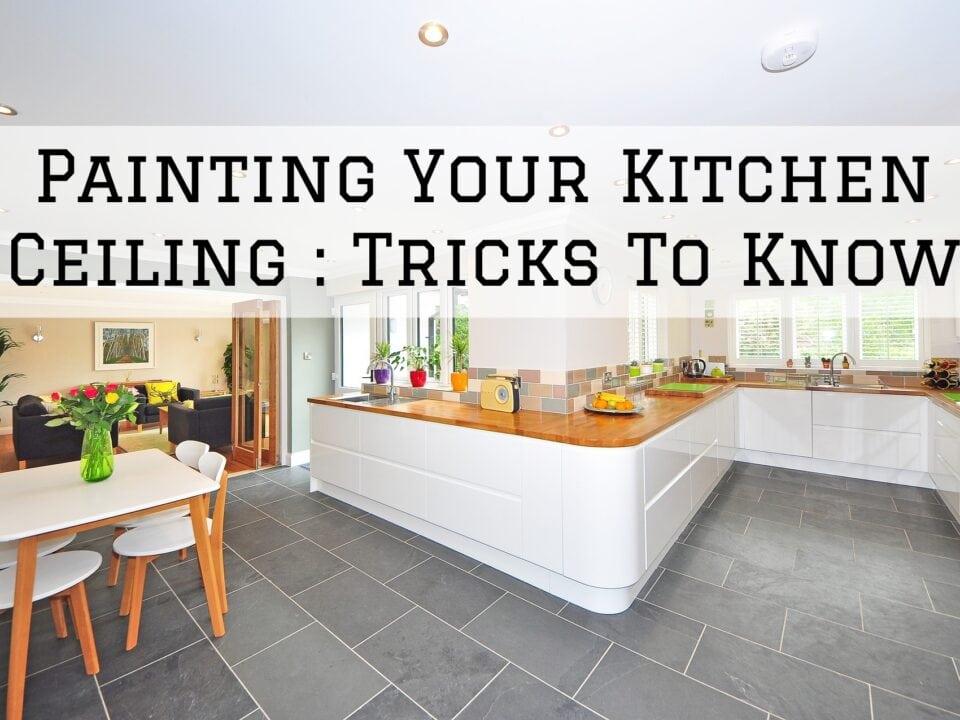Tips To Minimize the Mess When Painting the Ceiling

6 Tips To Keep Your Interior Paint Job Less Messy
September 24, 2019
7 Tips for Making Exterior Paint Jobs Last Longer
October 10, 2019Painting the ceiling can be a nightmare if you don’t have the experience and the right tools. Even the professional painters don’t particularly enjoy working on ceiling painting projects. Painting the ceiling can have you straining your neck, back, and hands for hours in awkward positions.
Even more frustrating are the inevitable paint drips and splatters that occur during painting. If you’re doing DIY painting, it’s going to be even worse. There is simply no way to stop the mess that comes with ceiling painting. But with some smart tips, you can minimize the splatters and drips and avoid ruining your wall paint, furniture, and other items. Read on;
1. Cover Your Valuables
This might sound obvious, but if you don’t do it right, you might end up with a colorful mess. If you can’t move some of the items (such as furniture, décor, and appliances) out of the room to somewhere else, bundle them in the middle of the room and cover them with a plastic sheet. Secure the plastic sheet in place using masking tape. Consider creating two small bundles instead of a single big one to have enough space for setting up the ladder.
2. Mask The Walls
If you’re not painting the walls at this moment, tape them up using a plastic sheet and masking tape. The paint will drip on the wall if you don’t cover them up, there is simply no way around it. Tape the entire wall right from the edge of the ceiling or trim. Taping the walls allows you to live some of the decor items in place and paint faster. You might need a helping hand here.
3. Use Canvas Drop Cloths on the Floor
We already know that paint is going to drip on your floor during ceiling painting. The best way to catch the splatters and drips is by using a canvas drop cloth on the floor. It will prevent light drips from getting to your floor or carpet underneath, but heavy spills might penetrate through. The best part about using a canvas drop cloth is that it will provide a stable surface for the ladder to stand on without sliding, unlike the plastic sheet.
4. Stick With a Roller
Professionals usually ‘cut in’ using a paintbrush and then paint the remaining wider surface using a roller. Paint rollers will give you the best coverage with much less splatter than paint sprayers. Using a paint sprayer means you will spend hours tapping and covering up every single thing in the room before painting. Use the right extension that will allow you to paint without straining.
5. Paint The Ceiling First
If you’re painting the ceiling and the walls, start with the ceiling, followed by the trim, and then the walls last. Start with the walls before the ceiling increases your chances of messing up your newly painted walls with ceiling paint drips. If you’re painting the walls as well, you don’t have to mask them; you can simply paint over any paint drips that occur after painting the ceiling.
The Bottom Line.
Painting a ceiling might feel like an extreme sport to first-time DIY enthusiasts. If you don’t have the skills, the experience, and the right tools, you might end up ruining both the paint job and a few of your valuables. Consider hiring a professional painting contractor in San Diego for help.
If you haven’t identified a painting contractor in San Diego for your interior painting project yet, Peek Brothers Painting would love to help. To give us a try, call us on (858)505-1361 for a FREE estimate.





